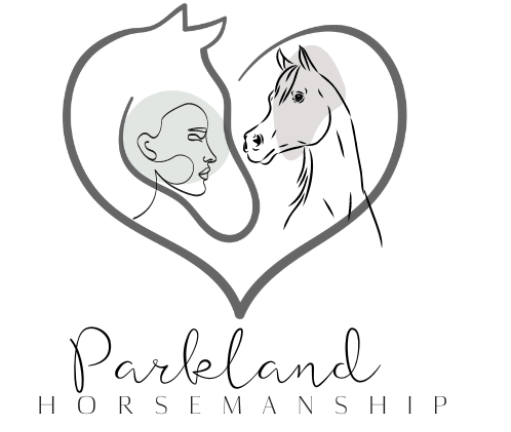Young horses represent immense potential. But to reach that full potential, they require time, dedication, and structure for growth and success.
For your own and the horse’s benefit, start off slowly with small 10-minute rides that include both walking and riding exercises (i.e. yielding shoulders or bending) as appropriate. To protect the young horse’s wellbeing early on, focus on giving him/her regular short but focused rides of this duration.
1. Keep it simple
Young horses need the proper combination of time, dedication and structure in order to reach their full potential as horses. Being easily scared off by new experiences requires that these be introduced gradually over time.
Young naive horses need to become comfortable wearing a halter and being brushed, in order to become familiar with all the equipment that will eventually be used under saddle. Furthermore, human touch must also be made more familiar so they trust and respect us as handlers.
Force won’t work when trying to coax a young horse into doing what you want them to. Instead, be calm and encouraging while encouraging forward movement; this will help build their confidence while teaching them about new experiences – something a good trainer should help facilitate.
2. Don’t be too human
Young horses trained for riding are truly rewarding to spend time with; they’re full of energy, curious, and open to new ideas.
Problems arise when trainers become too humane in their approach. A horse that feels overwhelmed or stressed from its training experience may view training as an unnecessary burden instead of seeing it as a means to aid humans.
There are various methods available to you when training a young horse. A good strategy is to break training down into manageable, bite-sized sessions of work. For example, if the horse is nervous of crossing obstacles like water, start with getting him used to stepping over puddles before moving onto shallow streams and ponds.
One way to avoid becoming too human when working with young horses is to refrain from employing severe corrections. A young horse should never be hit, hit hard or otherwise mistreated to get them on board with you.
3. Think like a horse
Parenting young horses can be challenging and frustrating at times, yet immensely satisfying as you build trust between horse and rider. But the stories accumulated through this experience will provide years of stories to share!
As soon as you start working with a young horse, it is essential that their needs are taken into consideration at all times. Desensitizing them to saddle pads, clippers and blankets early will make training sessions much simpler for both of you later on.
I also suggest introducing them to poles on the ground and conducting creative patterns walking across, around, and between them. This is an effective way of building their body awareness and athletic capability later. Just make sure that you stay in control at all times; otherwise this could become dangerous for both of you! Take your time when performing these exercises to prevent any missteps from becoming unsafe scenarios for all involved.
4. Be patient
As with raising children, young horses require patience and consistency when being raised. Learning takes time, as does feeling safe with their handlers. Once well trained, horses should remain calm regardless of any stressful or frightening situations; otherwise they might resort to trying other means such as bucking, rearing, spinning, shying, rushing and opening their mouth or lying down as a form of escape.
Young horses tend to have short attention spans, so it is crucial that their training offers numerous chances for success. If working on ground poles to develop coordination and foot placement, be sure to schedule short walks across, around and between poles on a regular basis.
Be patient when desensitizing a horse to certain objects or movements, such as clippers, blankets and saddles. This will prevent them from becoming distressed when these are used on riders – this process is known as counterconditioning.

